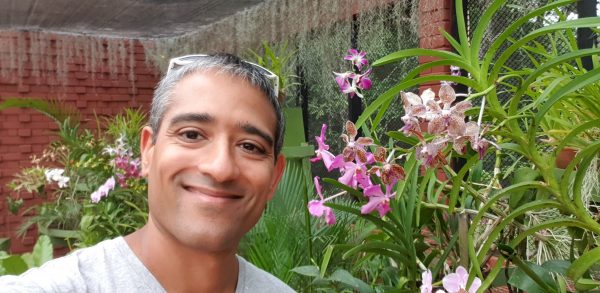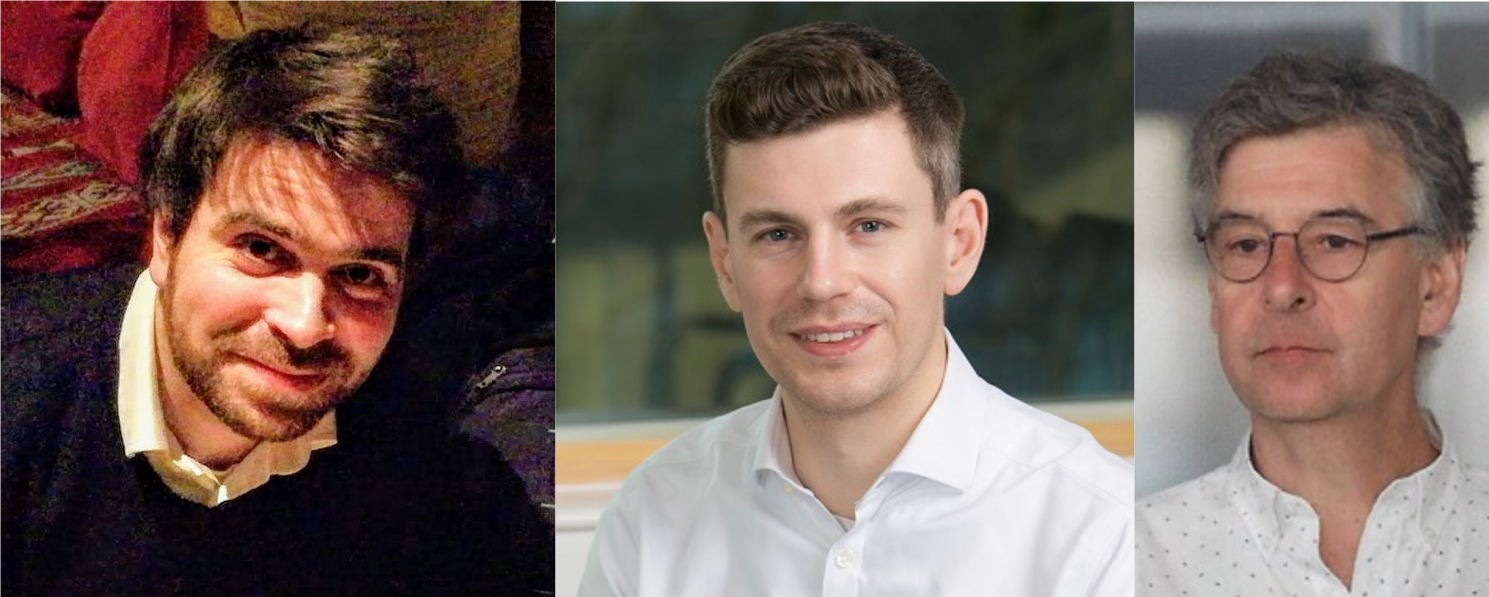By Agah Karakuzu

For this month’s Editor’s Pick, we interviewed Shaihan Malik and Daniel West from King’s College London (KCL) about their paper “Steady‐state imaging with inhomogeneous magnetization transfer contrast using multiband radiofrequency pulses”. This paper presents an implementation of inhomogeneous magnetization transfer (ihMT) that uses nonselective multiband RF pulses to simultaneously saturate the off-resonance spins and excite the on-resonance ones. This work demonstrated exemplary reproducible research practices; not only did the authors share the code related to their work, but they also wrote excellent documentation to accompany their software.
MRMH: Can you tell us a bit about how you got involved in MRI research?

Daniel: I did a physics undergrad degree here at KCL, and this is where I became interestested in MRI. Right now, I am mainly interested in quantitative MRI methods for myelin imaging. So far during my PhD, I’ve worked on multicomponent DESPOT and ihMT.
Shaihan: I’ve been doing MRI work since about 2003. I did a PhD in image reconstruction and then a postdoc in parallel transmission, during which I worked on a 3T system. This, unlike 7T systems, isn’t a field strength that uses parallel transmit a lot. I still work a great deal in parallel transmit; we just installed a 7T system here at King’s College. But then we started this second strand of research into quantitative MRI and surrounding techniques. That’s been going on for about the last five years. I’m enjoying the strictly physics part of MRI the most.
MRMH: Your paper has a pretty comprehensive title! Can you unpack it a little bit to prepare our readers for the rest of the interview?
Shaihan: ihMT is a really unique contrast mechanism, which I first came across a few years ago at ISMRM. If you jump straight in at the deep end, with a normal MT effect, you are looking at transfer magnetization between free water and semi-solid substances using a single off-resonance pulse. With ihMT, you apply the same amount of power at two different frequencies, equally spaced on either side of the water resonance. You may think that this is the same as applying all of the power either at the positive or at the negative frequency. But, the ihMT means that in some tissues applying RF power in that fashion gives you a different result from just having a single off-resonance frequency. The spin system is not following the normal equation that we would have used to describe it.
Daniel: This paper offers an alternative method for generating ihMT contrast. In the literature there are sequences where you have a preparation phase of multiple RF pulses with either a fixed or alternating frequency offset, followed by multiple gradient readouts. Our sequence applies multiband pulses, simultaneously exciting the free water and saturating the semi-solid component. Normally, these things are performed separately, but this method does them both at once allowing you to build the effect into regular steady-state sequences.
MRMH: Your group applied multiband pulses to stabilize quantitative relaxometry measurements. How does that relate to ihMT?
Shaihan: The idea of using these non-selected multiband pulses actually comes from that work. The idea was to collect multiple images using spoiled and balanced sequences with different flip angles, and then to fit the signal equations to estimate T1 and T2 values. But, depending on which combinations of flip angles we choose, we get systematic errors. When you change the flip angle, you either have to increase or decrease the amplitude of the pulse, or change the pulse duration. This changes the amount of RF power in the sequence and alters the magnetization transfer effect.
We came up with the solution of using non-selective multiband pulses. Let’s say you start with a high flip angle. As you decrease the flip angle, you add additional RF power at sidebands, which are quite far away, a few kHz off resonance. They don’t do anything to the water signal, but they add extra power to saturate your semi-solid. So, all of the measurements you make in your variable flip angle sequence have the same RF power, which makes your quantitative maps much more reproducible.

MRMH: What do I need to do to allow my SPGR sequence to collect ihMT data? How practical is this?
Daniel: We obviously need the mechanism to generate the ihMT contrast. On the basis of what is reported in our paper, including our two- or three-band multiband pulses would be enough, and then you would have your SPGR readout after each of these pulses. So, it’s just the pulse that allows you to generate the contrast.
MRMH: Can we use the exact same pulses that you designed?
Malik: Our GitHub repo actually contains software to make those pulses!
Agah: That’s great! What are some of the immediate implications of this work and where do you see ihMT going in the long term?
Daniel: I think the key feature of ihMT is myelin specificity. That’s its selling point compared with standard MT methods. Recent histology studies showed that ihMT performs better compared with other MT and water imaging methods. For the next steps with ihMT, we could look into demyelinating conditions such as multiple sclerosis, and into infant development.
Shaihan: The method in this paper is probably not the most effective for generating ihMT contrast. Steady-state sequences give us simple signal relationships, which are quite useful for doing quantitative MRI. We really use them as a demonstration of how ihMT fits into what we already know. But if you want to get more ihMT contrast, people have shown that it’s better to alternate between saturating and then leaving it to recover for a while and then saturating it again.
MRMH: I can’t help but feel enthusiastic when I see a version control commit hash in a paper! Where else do you think MRI research can benefit from version control and open source?
Shaihan: This is not the first study where we’ve shared version control commit hashes in the resulting paper. It is something that we really try hard to do consistently. As regards phantom imaging data and simulation results, we just put everything available online, because there’s no reason not to! A barrier, though, is the sequence code and the fact that we all have different scanners.
MRMH: Can the absence of collaborative pulse sequence development cause issues? Are you using any open communication channels for sequence development?
Shaihan: I think there are more parameters that can change the signal than the ones we normally report, and that can be a problem. An obvious simple one is the RF spoiling phase that you use in SPGR. Every manufacturer has a different phase increment value. We recently published another paper about this in relation to our CSMT technique, where we applied the same multiband pulses across different vendor scanners (Philips and GE). We showed that if you don’t do anything, and just use the native scanner protocols, you get really different answers for the T1 and T2 mapping.
Daniel: Personally, I’ve only done bit sequence programming on a Philips 1.5T scanner. There are some online forums and stuff around for our scanners where we can talk about our implementation and get ideas from people. I guess that’s the only communication channel that’s currently available to us.




